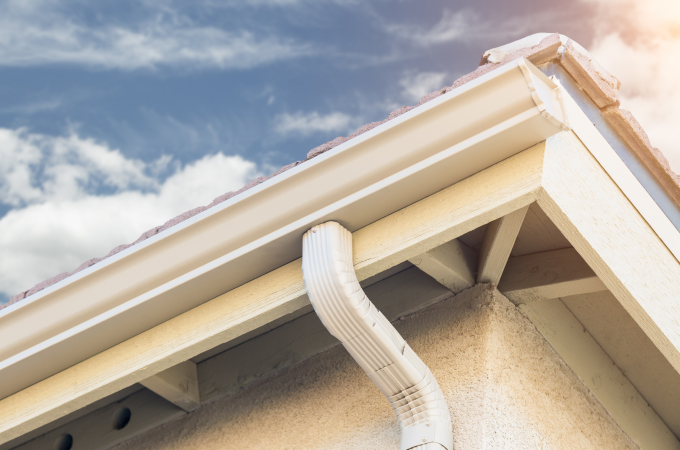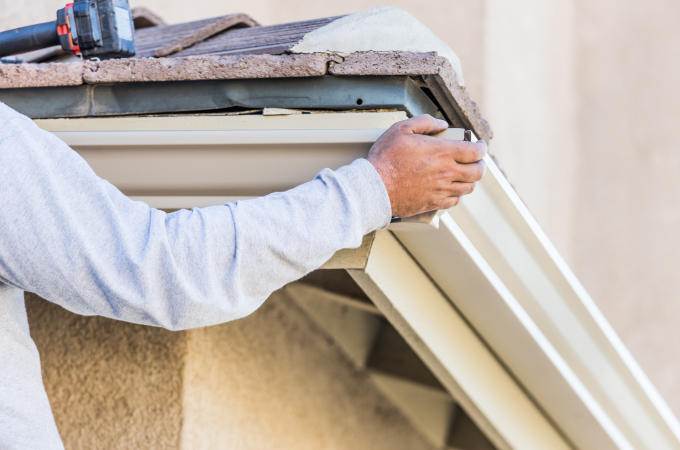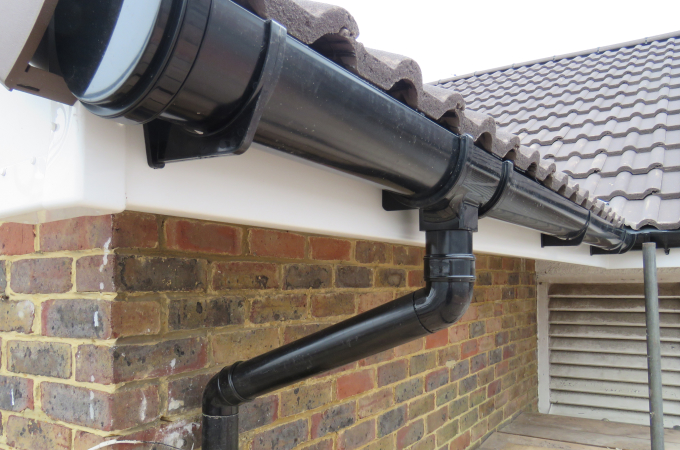The summer sunshine will soon be here. Along with it, temperatures are sure to rise making outside chores not only uncomfortable but nearly unbearable. Many people take time in the spring to ensure that their exterior property is in tip top shape before summer arrives. This includes inspecting their rain gutters.
Rain gutters serve the important function of channeling excess rain water away from the structure. Without them, the excess water could cause severe damage such as foundational issues, wood rot and interior flooding. And when rain gutters aren’t in peak performance, you are more likely to experience these types of problems.
Before the summer heat arrives, take time to inspect your rain gutters using these five techniques:
1. Perform a Visual Inspection – The best place to begin your rain gutter assessment is with a visual inspection of the system. Using a ladder, climb up to the height of your gutters to examine the inside. Check for excess debris including leaves, twigs and dirt. From the ground, look for sagging gutters or gutters that are pulling away from the home. Also, examine for any signs of rust or deterioration.
2. Complete a Simple Water Test – One easy way to know if your rain gutters are ready for summer is by performing a simple water test. Use a hose to add water to the rain gutters and see what happens. If the water is sent out and away from the home, you know they are working properly. If the water stays in the system, more investigation is needed.
3. Check for Slow-Moving or Standing Water – Have standing or very slow moving water? If so, the slope of your downspouts may be incorrect. Work with your spikes and hangers to increase or decrease the spout’s elevation until water flows more freely.
4. Examine the Downspouts – Often times, downspouts are the problem when it comes to faulty rain gutter systems. Their curves and tight shapes make them easily clogged causing water backups. After disconnecting any downspouts to underground pipes, spray water through them to loosen any stuck material. Then ensure that the water comes through the end.
5. Inspect Seams, Joints & Ends – Seams, joints and ends are notorious for leaks. Missing sealant and shifting pieces make them more prone to allowing water to exit in the wrong spots. This can lead to pooling on sidewalks, driveways and more. Look for holes or gaps in the rain gutters and check for missing or cracked sealant.
There is no time better than now to give your rain gutters a good inspection. And GutterSupply.com is here to help. We carry the tools and supplies you need to maintain a healthy and well-functioning rain gutter system. Not only do we offer one of the largest selections you will find, we also are dedicated to providing top-notch service and competitive pricing. Before the days get longer and the temperatures get hotter, make sure your rain gutters are in tip-top shape.
To learn more about GutterSupply.com’s large selection of quality rain gutter supplies, visit our website or contact us at 888-909-RAIN.
 Contractors
Contractors



